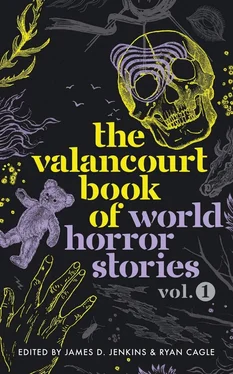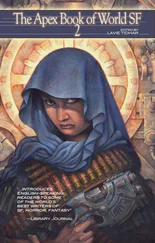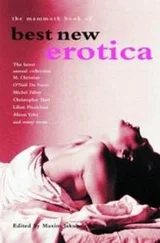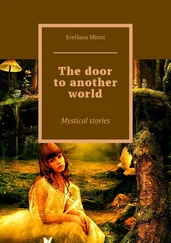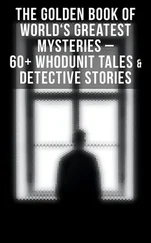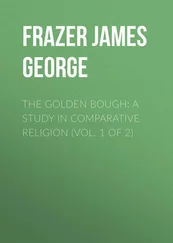THE VALANCOURT BOOK OF WORLD HORROR STORIES
Volume One
Edited by James D. Jenkins & Ryan Cagle
Most horror readers, to the extent they’ve thought about it at all, have probably always assumed that horror fiction is an Anglo-American phenomenon. From Horace Walpole and Ann Radcliffe to Edgar Allan Poe and M. R. James, to H. P. Lovecraft, Shirley Jackson and Stephen King, horror has always been first and foremost a product of the United States and the British Isles, right? Aside from a handful of 19th-century French or German or Russian stories that crop up every so often in an old anthology, or the occasional name bandied about by horror fiction connoisseurs, but whose works are largely unavailable and seldom read, such as the Belgian Jean Ray (1887-1964), there’s not really much ‘international horror fiction’ to speak of. Everybody knows that, right?
But what if everybody was wrong? What if there were a whole world of great horror literature out there being produced by writers in distant lands, in books you couldn’t access and languages you couldn’t read? To an avid horror fan, what could be more horrifying than that?!
If you’re still struggling to come up with the names of international horror writers, don’t feel bad. You’re not alone. Even in countries where fine horror fiction exists, it has often been ignored or forgotten. For example, in the introduction to his anthology of all-original Dutch horror fiction, editor Robert-Henk Zuidinga laments that ‘few Dutch-language writers have ventured [to write in the field of the] literary horror story’ [1] Robert-Henk Zuidinga (ed.), Uit den boze: Oorspronkelijke griezelverhalen (Amsterdam: Sijthoff, 1984), p. 7. The translation is ours.
, a judgment that neglects the psychological horror tales of Felix Timmermans (1886-1947) (recently published by Valancourt), the Aickman-style strange stories of Jacques Hamelink (b. 1939), and the elegant ghost stories of Kathinka Lannoy (1917-1996), to name a few. Similarly, the popular Norwegian thriller writer André Bjerke recounts that he was approached to edit an anthology of ghost stories from around the world and a separate anthology featuring only fantastic tales from Norway. In his response to the publisher, he warned that the Norwegian ‘anthology is naturally leaner than [the international one], both in terms of quality and quantity’ and wrote that, ‘here I could wander like [explorer Henry Morton] Stanley in the undiscovered primeval forest – for no one has gone into this terrain before me’. [2] André Bjerke (ed)., Drømmen, draugen og dauingen: grøssere og selsomme historier i norsk prosa (Oslo: Den norske Bokklubben, 1978), p. 5. The translation is ours.
And yet, despite his initial misgivings, in the end Bjerke managed to compile an impressive volume of some two dozen fine Norwegian horror stories spanning 1840 to 1977, including one we’ve chosen for the present volume. To cite one more example, the Argentinian author of weird tales Mariana Enríquez recently declared that, ‘There is no tradition of horror or weird writing in Spanish’ [3] Mariana Enríquez, ‘Creating a New Tradition of Latin American Horror’, https://lithub.com/creating-a-new-tradition-of-latin-american-horror/, Oct. 31, 2018 (accessed April 17, 2020).
, a debatable pronouncement that would no doubt come as a surprise to the Spanish writers featured in the present volume.
The moral of the story is that if one takes the trouble to look hard enough, there’s a much larger body of world horror fiction out there than any of us would suspect. However, as Bjerke suggested, it often involves deep digging and venturing into uncharted waters.
In fact, international horror fiction has been around just about as long as it has existed in the English-speaking world. Not long after Horace Walpole kicked off the craze for Gothic fiction with The Castle of Otranto (1764), William Beckford published his masterpiece Vathek (1786), written in French and issued in Switzerland. And in the 1790s, while Ann Radcliffe’s bestsellers like The Mysteries of Udolpho (1794) were flying off British circulating library shelves, the Polish Count Jan Potocki was writing, again in French, his own Gothic masterpiece, The Manuscript Found in Saragossa . Ukrainian-born Nikolai Gogol was writing tales in Russian that might be called ‘Poe-esque’ before Poe himself began publishing stories in America. During the Romantic era, while Gothic horror was popular in England and America, it also flourished in France, Germany [4] See, e.g., Daniel Hall, French and German Gothic Fiction in the Late Eighteenth Century (Bern: Peter Lang, 2005).
, Italy [5] See Riccardo Reim (ed.), Da uno spiraglio: Racconti neri e fantastici dell’Ottocento italiano , (Roma: Newton Compton, 1992).
, Sweden [6] See the collections of rare 19th-century Swedish horror fiction published by Aleph, e.g., Nattens paradis: Svenska sällsamheter , ed. Rickard Berghorn (Stockaryd: Aleph, 2017).
and Spain [7] See, e.g., Miriam López Santos, La novela gótica en España ( 1788-1833 ), (Vigo: Editorial Academia del Hispanismo, 2010).
, and throughout the 19th and early 20th centuries, many European countries, as well as places as far apart as Argentina [8] Probably more fairly termed ‘weird’ than outright ‘horror’, Argentine writers such as Jorge Luis Borges, Silvina Ocampo, and Julio Cortázar might be cited here, along with contemporary writer Mariana Enríquez, whose fine collection Things We Lost in the Fire (2016) was a rare international horror title to see wide release in English.
and Japan [9] For example, Lafcadio Hearn’s Kwaidan: Stories and Studies of Strange Things (1904), Edogawa Rampa’s Japanese Tales of Mystery and Imagination (1954) or Koji Suzuki’s Ring (1991) and its sequels.
, had a tradition of what might be termed horror or weird fiction. And, as you’re about to find out from this book, horror fiction is alive and flourishing in nearly every corner of the world in the 21st century.
The impulse towards horror appears to be a universal phenomenon, running through the literatures of a great many cultures over a very long period of time. If horror fiction as we think of it today is a relatively modern concept, the trappings of horror can be found in writing from all over the world throughout all of human history. From the witch Circe, murderous Sirens and man-eating Cyclops in Homer’s The Odyssey to the Bible’s stories of demons and devils, to the Roman writer Pliny the Elder’s accounts of werewolves, it is not hard to find the precursors of modern-day horror in ancient texts from around the world.
But this isn’t the place or time for a full exploration of horror throughout the ages or throughout the world. [10] Such a book is yet to be written; however, Jess Nevins’s recent scholarship, published in Horror Needs No Passport: 20th Century Horror Literature Outside the U.S. and U.K. (self-published, 2018) and Horror Fiction in the 20th Century (Santa Barbara, Calif.: Praeger, 2020), is probably the best place to start.
The point we’re trying to make is that horror is neither an exclusively modern phenomenon nor an exclusively Anglophone one, and moreover – and what might be most surprising – some of the world’s best horror fiction has come (and continues to come) from elsewhere.
Yet although there is a lot of high-quality horror fiction continuing to be produced around the world, very little of it is being published for English-speaking readers. There have been a couple of encouraging exceptions in recent years – Dutch author Thomas Olde Heuvelt’s internationally bestselling witch novel Hex (2016) and French writer Grégoire Courtois’ harrowing The Laws of the Skies (2019) come to mind – but for the most part, on the rare occasions when foreign horror is published for an American or British audience, it’s an isolated appearance of a short story in an obscure periodical, or publication online in some little-frequented corner of the web.
Читать дальше
